-
 Bitcoin
Bitcoin $117400
-0.25% -
 Ethereum
Ethereum $3762
-0.57% -
 XRP
XRP $3.072
-1.57% -
 Tether USDt
Tether USDt $1.000
0.02% -
 BNB
BNB $786.5
-2.10% -
 Solana
Solana $175.6
-3.15% -
 USDC
USDC $0.9999
0.01% -
 Dogecoin
Dogecoin $0.2166
-2.88% -
 TRON
TRON $0.3268
-2.89% -
 Cardano
Cardano $0.7540
-3.38% -
 Hyperliquid
Hyperliquid $41.82
-3.43% -
 Sui
Sui $3.723
-2.44% -
 Stellar
Stellar $0.4030
-3.66% -
 Chainlink
Chainlink $17.47
-1.80% -
 Bitcoin Cash
Bitcoin Cash $568.2
1.00% -
 Hedera
Hedera $0.2531
-3.51% -
 Avalanche
Avalanche $23.09
-4.91% -
 Litecoin
Litecoin $109.6
1.22% -
 UNUS SED LEO
UNUS SED LEO $8.954
-0.09% -
 Toncoin
Toncoin $3.366
-0.23% -
 Ethena USDe
Ethena USDe $1.001
0.01% -
 Shiba Inu
Shiba Inu $0.00001269
-2.93% -
 Uniswap
Uniswap $9.816
-4.14% -
 Polkadot
Polkadot $3.754
-3.49% -
 Monero
Monero $308.0
-2.79% -
 Dai
Dai $1.000
-0.01% -
 Bitget Token
Bitget Token $4.497
-0.77% -
 Pepe
Pepe $0.00001117
-2.61% -
 Cronos
Cronos $0.1428
-0.40% -
 Aave
Aave $269.9
-4.24%
How to interpret EMA crossover signals?
The Exponential Moving Average (EMA) gives more weight to recent prices, making it ideal for spotting trends in fast-moving crypto markets.
Jul 30, 2025 at 01:56 pm
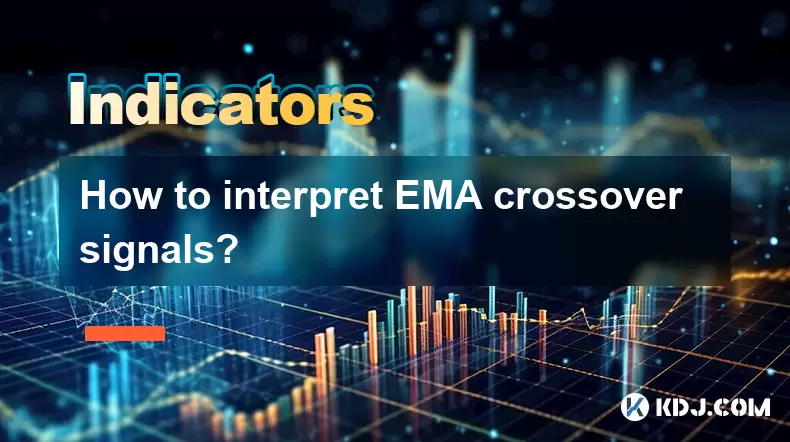
Understanding EMA and Its Role in Technical Analysis
The Exponential Moving Average (EMA) is a widely used technical indicator in the cryptocurrency trading community. Unlike the Simple Moving Average (SMA), which assigns equal weight to all data points, the EMA gives greater weight to recent price data, making it more responsive to new information. This responsiveness is especially valuable in the fast-moving crypto markets, where prices can shift dramatically within short timeframes. Traders use EMAs to smooth out price data and identify the direction of the trend. Common EMA periods include the 9-day, 20-day, 50-day, and 200-day EMAs, with shorter periods reacting more quickly to price changes.
When analyzing charts, the EMA appears as a line that overlays price action. A rising EMA suggests an uptrend, while a falling EMA indicates a downtrend. The key advantage of using EMA over SMA is its ability to capture momentum shifts faster, allowing traders to potentially enter or exit positions earlier. In the context of cryptocurrency trading, where volatility is high and trends can reverse quickly, this timeliness is critical. The foundation of EMA crossover strategies lies in comparing two or more EMAs of different lengths to detect potential changes in market sentiment.
What Is an EMA Crossover?
An EMA crossover occurs when a shorter-period EMA crosses above or below a longer-period EMA. This event is interpreted as a signal of a potential trend change. There are two primary types of crossovers: the bullish crossover and the bearish crossover. A bullish crossover happens when the shorter EMA (e.g., 9-day) moves above the longer EMA (e.g., 21-day), suggesting that upward momentum is building. Conversely, a bearish crossover occurs when the shorter EMA drops below the longer EMA, indicating that selling pressure may be increasing.
For example, on a Bitcoin 4-hour chart, if the 9 EMA crosses above the 21 EMA, this could signal the start of a new uptrend. Traders might interpret this as a buy signal. Similarly, if the 9 EMA crosses below the 21 EMA, it may prompt traders to consider selling or shorting. These crossovers are often used in conjunction with other indicators like volume or RSI to confirm the strength of the signal. It's important to note that EMA crossovers can generate false signals, especially in sideways or choppy markets, so context matters.
Setting Up EMA Crossovers on Trading Platforms
To interpret EMA crossovers effectively, you must first set them up correctly on your trading platform. Most platforms, such as TradingView, Binance, or MetaTrader, allow you to add multiple EMAs to a price chart. Here’s how to do it step-by-step:
- Open your preferred charting platform and load the cryptocurrency pair you want to analyze (e.g., BTC/USDT).
- Click on the "Indicators" or "Studies" button, usually located at the top of the chart.
- Search for "Exponential Moving Average" in the indicator library.
- Add the first EMA, setting the period to your desired value (e.g., 9).
- Repeat the process to add a second EMA with a longer period (e.g., 21).
- Customize the colors of the EMAs for clarity (e.g., green for 9 EMA, red for 21 EMA).
Once both EMAs are visible, watch for points where the lines intersect. Some platforms allow you to create alerts when a crossover occurs. To set this up:
- Right-click on the chart or access the alert menu.
- Select "Create Alert."
- Define the condition: "When 9 EMA crosses above 21 EMA" for bullish signals.
- Choose notification preferences (email, pop-up, etc.).
- Save the alert.
This setup enables real-time monitoring without constant chart watching, which is essential in the 24/7 crypto market.
Interpreting Bullish and Bearish Crossover Signals
When a bullish EMA crossover occurs, it suggests that short-term momentum is overtaking long-term momentum. This can be a signal to enter a long position or close a short position. However, not every crossover leads to a sustained trend. To improve accuracy, consider the following:
- Confirm the crossover with increasing trading volume—higher volume on the crossover day strengthens the signal.
- Check the position of the price relative to the EMAs—if price is above both EMAs, the bullish signal is stronger.
- Look for confluence with support levels or bullish candlestick patterns like hammer or engulfing patterns.
For a bearish EMA crossover, the opposite applies. When the short-term EMA crosses below the long-term EMA, it may indicate weakening bullish momentum. Traders might consider exiting long positions or initiating short trades. To validate the signal:
- Ensure the crossover happens with high selling volume.
- Verify that the price is below both EMAs, indicating a bearish structure.
- Watch for resistance levels or bearish candlestick patterns such as shooting star or dark cloud cover.
It’s also useful to analyze the angle of the EMAs—a steeply rising or falling EMA suggests strong momentum, while flat EMAs indicate consolidation.
Common EMA Crossover Strategies in Crypto Trading
One popular strategy is the "Golden Cross" and "Death Cross", which use the 50-day and 200-day EMAs. A Golden Cross (50 EMA > 200 EMA) is seen as a long-term bullish signal, often watched by institutional investors. The Death Cross (50 EMA < 200 EMA) is its bearish counterpart. While these are more relevant on daily or weekly charts, they can influence sentiment across timeframes.
Another strategy involves using dual EMAs on lower timeframes for scalping or day trading. For instance, on a 15-minute chart, traders might use 8 and 21 EMAs. When the 8 EMA crosses above the 21 EMA, they enter a long trade, placing a stop-loss below the recent swing low. The trade is exited when the 8 EMA crosses back below the 21 EMA.
A third approach combines EMA crossovers with the MACD indicator. If the EMA crossover aligns with MACD crossing above the signal line, the buy signal is reinforced. This multi-indicator confirmation helps reduce false entries.
Limitations and Risks of EMA Crossovers
Despite their popularity, EMA crossovers are lagging indicators, meaning they are based on past price data. They may generate signals after a significant portion of the move has already occurred. In ranging markets, EMAs can produce whipsaws—frequent, false crossovers that lead to losing trades. For example, in a sideways BTC market between $30,000 and $32,000, the 9 and 21 EMAs may cross back and forth multiple times, triggering unprofitable entries.
To mitigate these risks:
- Use EMA crossovers only in trending markets, identified via tools like ADX or trendlines.
- Apply filters such as minimum price movement before acting on a crossover.
- Combine with price action analysis to avoid entering on weak signals.
Moreover, different cryptocurrencies exhibit varying volatility levels. What works for Bitcoin may not work for a low-cap altcoin with erratic price swings. Always test strategies in a demo environment before live trading.
Frequently Asked Questions
What is the best EMA period combination for crypto trading?
There is no universal "best" combination, but common pairs include 9 and 21, 12 and 26, or 50 and 200. Shorter periods like 9 and 21 are suitable for intraday trading, while 50 and 200 are used for long-term trend analysis. The choice depends on your trading style and timeframe.
Can EMA crossovers be used on all cryptocurrency timeframes?
Yes, EMA crossovers can be applied to any timeframe—from 1-minute charts to weekly charts. However, signals on higher timeframes (e.g., daily) are generally more reliable due to reduced noise and stronger confirmation from volume.
How do I avoid false signals from EMA crossovers?
Use additional confirmation tools such as volume analysis, support/resistance levels, or oscillators like RSI. Avoid trading crossovers in sideways markets by first identifying the prevailing trend.
Should I use EMA or SMA for crossover strategies?
EMA is generally preferred in crypto due to its sensitivity to recent price changes. SMA reacts more slowly and may delay entry, which can be costly in fast-moving markets. However, SMA may produce fewer false signals in stable conditions.
Disclaimer:info@kdj.com
The information provided is not trading advice. kdj.com does not assume any responsibility for any investments made based on the information provided in this article. Cryptocurrencies are highly volatile and it is highly recommended that you invest with caution after thorough research!
If you believe that the content used on this website infringes your copyright, please contact us immediately (info@kdj.com) and we will delete it promptly.
- LYNO Token Presale: AI Arbitrage Revolution in DeFi
- 2025-07-31 05:11:11
- Pepecoin Successors: Can These Cryptocurrencies Make You a Millionaire?
- 2025-07-31 05:50:12
- AML Bitcoin Fraud: Cracking Down on Crypto Crime in the Big Apple and Beyond
- 2025-07-31 04:33:53
- Cardano (ADA) in 2025: Navigating Crypto's Future
- 2025-07-31 03:52:07
- Solana Meme Coin Price Prediction: Will the Frog Outleap the Dog?
- 2025-07-31 03:52:07
- Bitcoin's Bullish Outlook: CryptoQuant's Insights on Futures Market Cooling
- 2025-07-31 03:59:10
Related knowledge

How does the VWAP line help in identifying overbought and oversold market conditions?
Jul 31,2025 at 05:19am
Understanding the VWAP Line and Its Role in Technical AnalysisThe Volume Weighted Average Price (VWAP) is a critical tool used by traders within the c...
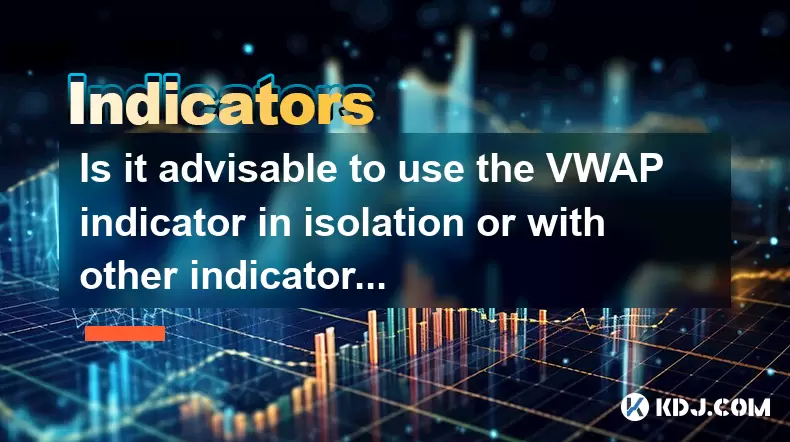
Is it advisable to use the VWAP indicator in isolation or with other indicators?
Jul 31,2025 at 06:48am
Understanding the VWAP Indicator and Its Core FunctionalityThe Volume Weighted Average Price (VWAP) is a widely used technical analysis tool in the cr...
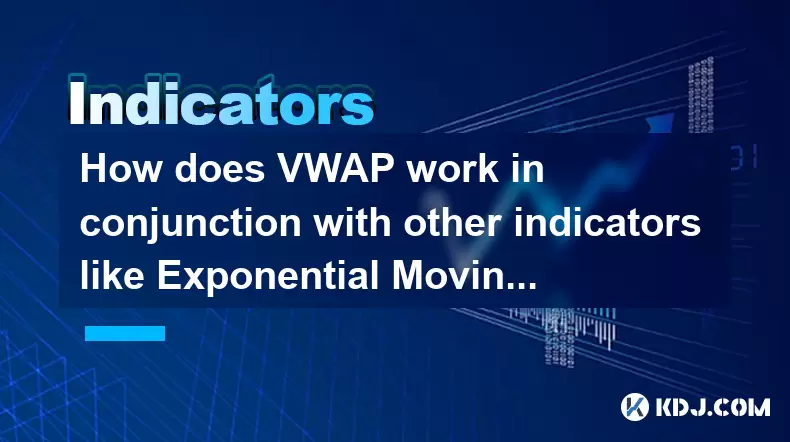
How does VWAP work in conjunction with other indicators like Exponential Moving Averages (EMAs)?
Jul 31,2025 at 04:38am
Understanding VWAP and Its Role in Crypto TradingThe Volume Weighted Average Price (VWAP) is a critical analytical tool in cryptocurrency trading, par...
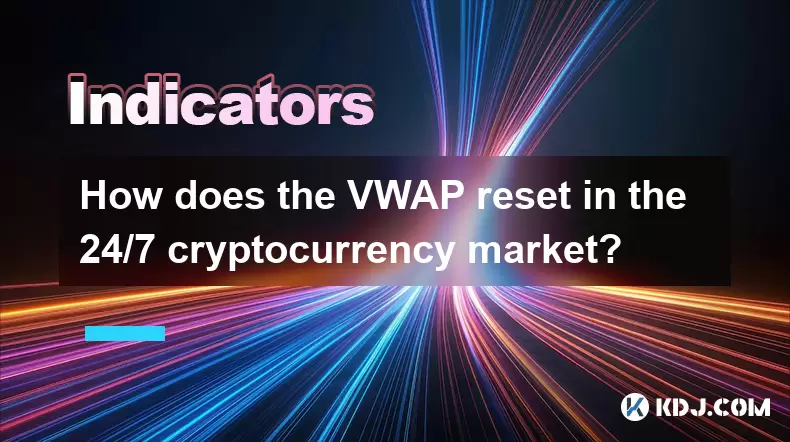
How does the VWAP reset in the 24/7 cryptocurrency market?
Jul 31,2025 at 06:38am
Understanding VWAP in Cryptocurrency MarketsThe Volume Weighted Average Price (VWAP) is a trading benchmark that calculates the average price of an as...

What exactly does the VWAP indicator measure?
Jul 31,2025 at 03:26am
Understanding the Core Concept of VWAPThe VWAP (Volume Weighted Average Price) indicator measures the average price of a financial asset, weighted by ...
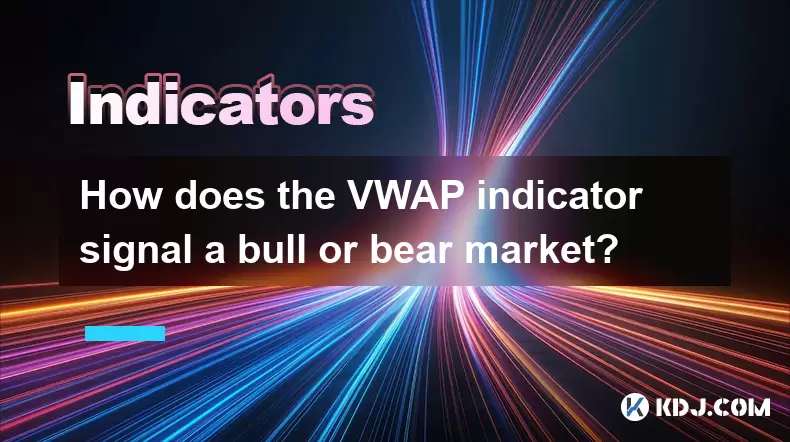
How does the VWAP indicator signal a bull or bear market?
Jul 31,2025 at 02:57am
Understanding the VWAP Indicator in Cryptocurrency TradingThe Volume Weighted Average Price (VWAP) is a widely used technical analysis tool in cryptoc...

How does the VWAP line help in identifying overbought and oversold market conditions?
Jul 31,2025 at 05:19am
Understanding the VWAP Line and Its Role in Technical AnalysisThe Volume Weighted Average Price (VWAP) is a critical tool used by traders within the c...

Is it advisable to use the VWAP indicator in isolation or with other indicators?
Jul 31,2025 at 06:48am
Understanding the VWAP Indicator and Its Core FunctionalityThe Volume Weighted Average Price (VWAP) is a widely used technical analysis tool in the cr...

How does VWAP work in conjunction with other indicators like Exponential Moving Averages (EMAs)?
Jul 31,2025 at 04:38am
Understanding VWAP and Its Role in Crypto TradingThe Volume Weighted Average Price (VWAP) is a critical analytical tool in cryptocurrency trading, par...

How does the VWAP reset in the 24/7 cryptocurrency market?
Jul 31,2025 at 06:38am
Understanding VWAP in Cryptocurrency MarketsThe Volume Weighted Average Price (VWAP) is a trading benchmark that calculates the average price of an as...

What exactly does the VWAP indicator measure?
Jul 31,2025 at 03:26am
Understanding the Core Concept of VWAPThe VWAP (Volume Weighted Average Price) indicator measures the average price of a financial asset, weighted by ...

How does the VWAP indicator signal a bull or bear market?
Jul 31,2025 at 02:57am
Understanding the VWAP Indicator in Cryptocurrency TradingThe Volume Weighted Average Price (VWAP) is a widely used technical analysis tool in cryptoc...
See all articles

























































































